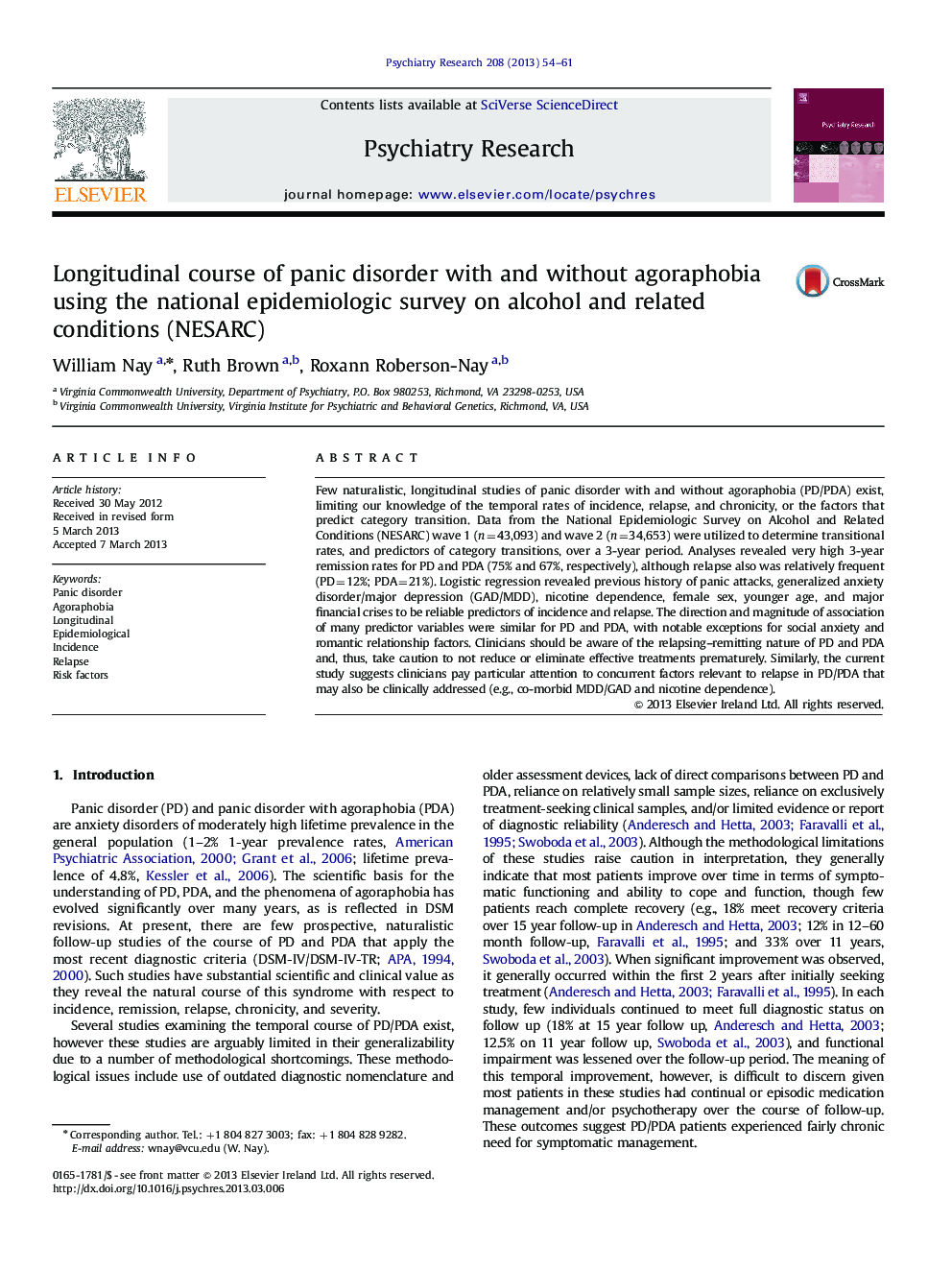| Article ID | Journal | Published Year | Pages | File Type |
|---|---|---|---|---|
| 331931 | Psychiatry Research | 2013 | 8 Pages |
Few naturalistic, longitudinal studies of panic disorder with and without agoraphobia (PD/PDA) exist, limiting our knowledge of the temporal rates of incidence, relapse, and chronicity, or the factors that predict category transition. Data from the National Epidemiologic Survey on Alcohol and Related Conditions (NESARC) wave 1 (n=43,093) and wave 2 (n=34,653) were utilized to determine transitional rates, and predictors of category transitions, over a 3-year period. Analyses revealed very high 3-year remission rates for PD and PDA (75% and 67%, respectively), although relapse also was relatively frequent (PD=12%; PDA=21%). Logistic regression revealed previous history of panic attacks, generalized anxiety disorder/major depression (GAD/MDD), nicotine dependence, female sex, younger age, and major financial crises to be reliable predictors of incidence and relapse. The direction and magnitude of association of many predictor variables were similar for PD and PDA, with notable exceptions for social anxiety and romantic relationship factors. Clinicians should be aware of the relapsing–remitting nature of PD and PDA and, thus, take caution to not reduce or eliminate effective treatments prematurely. Similarly, the current study suggests clinicians pay particular attention to concurrent factors relevant to relapse in PD/PDA that may also be clinically addressed (e.g., co-morbid MDD/GAD and nicotine dependence).
